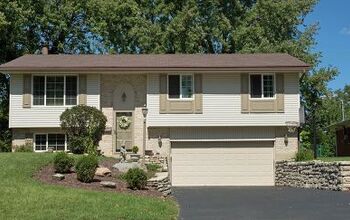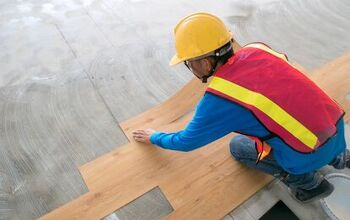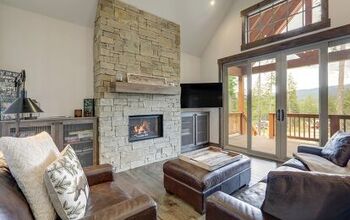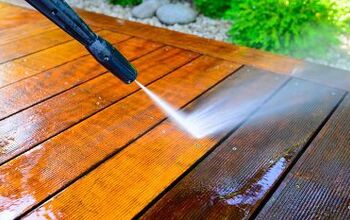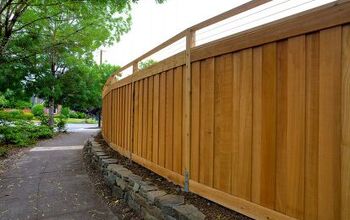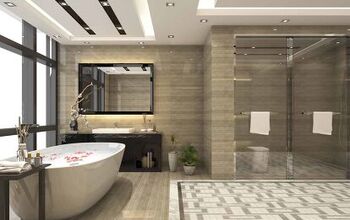How To Get Privacy In A Beach House

Many people dream of one day buying a beach house and enjoying beachfront views all day. However, many people also forget that beachfronts typically feature lots of foot traffic and prying eyes. You’re not alone if you’ve ever wondered how to get privacy in a beach house.
The easiest way to get privacy in a beach house is to cover your windows with solar shades. You can also set up solar shades at various angles to block views from above, across, and beside your beachfront backyard. Use tall plants, hedges, and sturdy fencing that stands 6’ or taller to get privacy in a beach house.
It’s also a great idea to put potted plants, cacti, and succulents on your indoor windowsills to get some extra privacy. Place some hanging plants in front of your windows on the outside as well to keep people from looking inside.
How To Enjoy Privacy At A Beach House
1. Put Hedges In
Hedges don’t grow right away, but they can help you get plenty of privacy in a beach house. Not only do they look great, but they can also help you feel insulated in your yard. This is more appealing than a huge wall that obscures your home’s beauty.
Some hedges grow faster than others, but the extra privacy is worth the wait. You must regularly prune your privacy hedges to ensure they don’t look messy and unkempt. Otherwise, you may draw negative attention.
Keep in mind that not all types of hedges can handle the weather conditions present at most beach houses. Look for hedges that are salt-tolerant and can handle strong winds coming off the water. That includes boxwoods, Griselinia littoralis, and English Laurel.
2. Install Solar Shades
The mixture of sunlight reflecting off the water and constant foot traffic can make you feel insecure in a beach house. Solar shades can help combat both of these problems, and they’re worth it for anyone who owns a beach house. They can also help protect your floors, walls, decorations, and furniture from getting sun-bleached by UV rays.
Solar shades can also help you lower your power bill during the summer, as your AC won’t have to work so hard. That’s because solar shades reduce the amount and intensity of sunlight entering through your windows, so your beach house won’t heat up as much. They can also make it much harder to see into your house, which is essential in high-traffic beachfront homes.
It costs an average of $100 per window to install solar shades, but it depends on the size and material. However, you only need to cover the windows that let in the most sun. Focus on windows that look out onto the high-traffic beachfront.
3. Tall Plants
Beach houses typically sit in climates that are perfect for growing tall, strong, healthy plants. Why not boost your privacy and enjoy some nice tropical plants at your beach house? Christmas palms, spiked agave plants, maneras, and palm trees are tall enough to boost privacy.
Granted, you must exercise some patience if you plan to grow your plants from seedlings. You can enjoy the benefits much faster if you buy large shrubs, flowers, and trees from a local plant nursery. They won’t be fully mature yet, but you won’t have to wait nearly as long.
4. Use Shade Sails
As the name suggests, shade sails can provide plenty of shade when you lounge in the yard at your beach house. However, they can also help you get privacy from onlookers and your neighbors alike. It all comes down to how you position your shade sails when you hang them.
It takes some creativity, but if you’re careful, you can set up shade sails to block attention from beach walkers. For example, you can fasten one end to your roof and another to a nearby palm tree at a diagonal angle to block views. Of course, the ideal positioning will vary based on your yard’s layout and how heavy the foot traffic is.
Prioritize areas where you spend the most time in your yard. You can even set up shade sails vertically to serve as makeshift walls. This is essential if you have houses on either side with minimal space in between.
5. Install A Fence
Your yard may have a fence, but does it block people from looking into your yard? If not, then it’s worth the cost to replace your fence with one that’s meant for privacy. Privacy fences have little to no space between the slats, which is essential to block prying eyes.
You can expect to spend between $1,800 and $10,000 to install a privacy fence, depending on the size, materials, and style. Vinyl, Trex, wood, and wrought iron are the most durable privacy fence materials you can buy. Redwood is an especially durable type of wood that is commonly used in fencing because of how long it lasts.
It can also withstand the salt exposure, humidity, and heat that is common at beachfront properties. Height is key, and your fence should be at least 6 feet tall to give you enough privacy to lounge comfortably in your yard. Otherwise, the average adult can easily look over your fence into your yard.
6. Tint Your Windows
Some people don’t think that solar shades provide nearly enough privacy. If that applies to you, you may want to consider tinting your windows to ensure nobody can see into your home. You can expect to spend $5 per square foot of window space to tint your windows.
Naturally, window tinting costs vary greatly based on window size and how many windows you have throughout your house. However, you can expect to spend between $300 and $900 on tinting if you have a small to moderate-sized house with many windows. The average homeowner spends $600 tinting all the windows in their home.
However, you can save money if you only focus on widows that people can easily see into. For example, you can tint the windows that face the beachfront where pedestrians typically walk.
7. Put Plants In Your Windows
Houseplants are more popular than ever, and you can use them to your advantage to get privacy at your beach house. Succulents, hoyas, cacti, and lipstick plants are easy to grow on window sills. Geraniums are great options as well, and they can add color and character to your home.
African milk trees, rubber plants, and spider plants can also thrive on windowsills. Some people put shelves in front of their windows and stack them full of potted plants. That’s a great idea if you have big, wide windows and want to cover as much of the area as possible.
You can also put hanging plants in front of your windows on the exterior to get more privacy. Ferns are the best option as they require little maintenance and can withstand tropical weather conditions. Keep up with pruning and watering the plants to ensure they grow and cover your windows as much as possible.
8. Get Motion-Activated Lights
Motion-activated lights won’t necessarily give you privacy, but they will deter intruders. This is important if you live in an area with lots of tourists on the beach. You can never be too careful, so you must protect your house from intruders.
Install motion-activated lights and security cameras near all the walkways and entry points at your house. That way, potential burglars will see the lights and cameras and avoid your house for fear of legal trouble.
Can You Legally Tint Your House Windows?
Yes, you can tint your house windows without any repercussions, such as fines and citations. Some people get confused about whether or not it’s legal because tinting car windows comes with many regulations. Don’t tint your car’s windows until you check local regulations, as it’s illegal in some states, and other states have strict guidelines about it.
Summing It Up
Surround your beach house with tall plants and hedges to get privacy from people walking on the beach. You can also set up shade sails and position them to block your neighbors and local pedestrians from looking into your yard. Tint your home’s windows or simply install solar shades to reduce sunlight and prevent people from seeing your home’s interior.
Related Guides:

Nick Durante is a professional writer with a primary focus on home improvement. When he is not writing about home improvement or taking on projects around the house, he likes to read and create art. He is always looking towards the newest trends in home improvement.
More by Nick Durante










